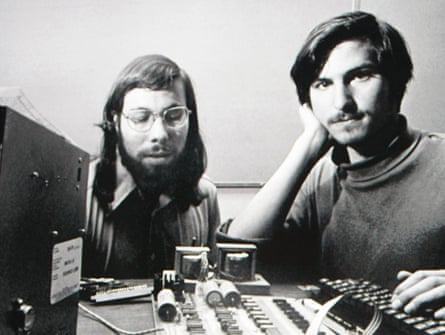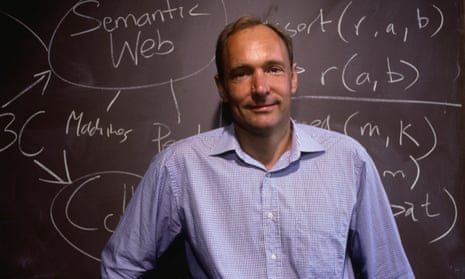Revolutions usually leave ancient institutions tottering, societies shaken, the streets awash with blood. But what Walter Isaacson calls the “digital revolution” has kept its promise to liberate mankind. Enrichment for the few has been balanced by empowerment for the rest of us, and we can all – as the enraptured Isaacson says – enjoy a “sublime user experience” when we turn on our computers. Wikipedia gives us access to a global mind; on social media we can chat with friends we may never meet and who might not actually exist; blogs “democratise public discourse” by giving a voice to those who were once condemned to mute anonymity. Has heaven really come down to our wired-up, interconnected Earth?
What Isaacson sees as an eruption of communal creativity began with two boldly irreligious experiments: an attempt to manufacture life scientifically, followed by a scheme for a machine that could think. After Mary Shelley’s Frankenstein stitched together his monster, Byron’s bluestocking daughter Ada Lovelace devised an “analytical engine” that could numerically replicate the “changes of mutual relationship” that occurred in God’s creation. Unlike Shelley’s mad scientist, Lovelace stopped short of challenging the official creator: her apparatus had “no pretension to originate anything”.
A century later, political necessity quashed this pious dread. The computing pioneers of the 1930s, as Isaacson points out, served military objectives. At MIT, Vannevar Bush’s differential analyser churned out artillery firing tables, and at Bletchley Park, after the war began, an all-electronic computer called the Colossus deciphered German codes. Later, the US air force and navy gobbled up all available microchips, which were used for guiding warheads aimed at targets in Russia or Cuba; only when the price of the chips dropped could they be used to power consumer products, not just weapons.

Isaacson’s narrative engrossingly tracks this transition from missiles to playthings, or from tools to toys; at the same time he’s aware that the quest was metaphysical, as it had been for Ada Lovelace. Punch cards were fed into clunky early computers like “an offering to the priests who shielded an oracle”, and when Steve Wozniak built a circuit that could outwit the phone company, he celebrated by placing a free long-distance call to the Pope. Isaacson compares the development of the internet – a collaboration between governments, academic researchers and underground hackers – to the building of a cathedral: there can’t be a single architect, because the structure is pieced together by so many teams of specialised workers. But rather than glorifying God, this immaterial edifice celebrates the collectivised memory of human beings, stored in the secular Bible of Wikipedia.
Elsewhere Isaacson uses more inimitably American analogies such as community barn-raising, or the quilting bees that brought together womenfolk on the prairies, and spreads the credit around the country, not allowing primacy to Silicon Valley. Much of the intellectual action happens at the Bell Labs in drab New Jersey, where the transistor was invented; Isaacson also commemorates a long line of midwestern tinkerers, bricoleurs who spliced valves and wires together in their basements during the long, dark days of winter. The internet becomes, in this reading, the last and most generous of America’s bequests to us all. Despite military urgency and profit-mongering, Isaacson believes that the altruism of scientists – who freely shared information and who even, before Bill Gates’s proprietary takeover, made computer software available without charge – put into action a civic creed propounded by Benjamin Franklin when he claimed that “to pour forth benefits for the common good is divine”.
Heartened by the pursuit of electronic happiness, Isaacson is too high-minded to notice the proliferation of online porn, and he ignores the “dark internet”, where terrorists exchange encrypted missives. He has faith in Wikipedia, which is vulnerable to meddling by troublemakers and liars, because he shares the “cheery optimism” of Ward Cunningham, who thought that users would respect the interactive software he designed because “people are generally good”.
Isaacson’s book is about abstruse intellectual insights, but those eureka moments happen to an almost novelistic cast of gawky nerds, unsocialised wonks and blissed-out hippies, with at least one spoon-bender and a campaigner against commercialised software who looks and sounds like a fulminating Old Testament prophet. The buddying-up of man and machine produces some wry comedy, as one infatuated engineer beds down in a laboratory with his fridge-sized computer, like a cowboy curled up in the hay with his horse. Another wild-eyed geek expostulates, Isaacson comments, with such hectic verbal speed that he seems to have hit his own fast-forward button. These geniuses appear to subsist on a diet of pizza, and in the case of the young Bill Gates, a whirring brain stayed in motion thanks to a daily intake of 16 caffeine-fuelled Cokes.

Sorting through this company of monomaniacs, Isaacson finds a recurring pattern, a binary pairing of opposites. Some of his characters are visionaries, others are technocrats; successful innovation mostly occurs when they team up. Apple happened because the “demon-driven mesmeriser” Steve Jobs made common cause with Wozniak, “an angelic naïf who looked like a panda”, and Google was begotten by the equally ill-adjusted partnership of slick Sergey Brin and painfully shy Larry Page. Hollywood casting directors must even now be speculating about appropriate odd couples for a film of Isaacson’s book.
Such alliances often prove shaky; Isaacson shows a rift opening between libertarian hackers who shared information without fees and plutocrats who copyrighted their discoveries and sat back to enjoy the spoils. Despite his tribute to human benevolence, he treats the evolving industry as an exercise in social Darwinism, which is why he pardons both the vituperative arrogance of Jobs and the monopolistic agenda of Gates.
Looking away from America, Isaacson smiles at the unworldliness of British contributors to the revolution. Alan Turing, for instance, told his mum that he worried about the morality of selling his decrypting technique to the government, and later the gentle, humble Donald Davies allowed a go-getting American to take credit for their research on data networking, only denouncing his colleague’s grandstanding when on his deathbed. Tim Berners-Lee amazes Isaacson by being “averse to personal aggrandisement”, and when travelling on business “accepts a much wider range of hotel-room facilities than a CEO would”.
By way of restitution, Isaacson singles out the achievements of unheralded women, recruited in the early days to punch cards – a task thought to be merely secretarial. The patron saint of his story is Ada Lovelace, who was incongruously honoured by the US defence department when it named its high-level object-oriented digital language after her; one of the book’s heroines is the feisty, salty-tongued Grace Hopper, who long before Bill Gates recognised that “hardware would become commoditised and that programming would be where the true value resided”.
Isaacson has such total trust in our newly webbed and convivially networked world that he invited corrections to some of his chapters by posting drafts on sites such as Medium, where “one excerpt was read by 18,200 people in its first week online”. A modest request for help, or perhaps the shrewd start of a pre-publicity campaign? I’m less inclined than Isaacson to trust “the wisdom of crowds”, but there’s no arguing with the result: this is the defining story of our era, and it’s here told lucidly, thrillingly and – because the bright ideas generally occur to human beings with the quirks, flaws and foibles that accompany overdeveloped intellect – above all, amusingly.
The Innovators is published by Simon & Schuster (£20). Click here to buy it for £16

Comments (…)
Sign in or create your Guardian account to join the discussion